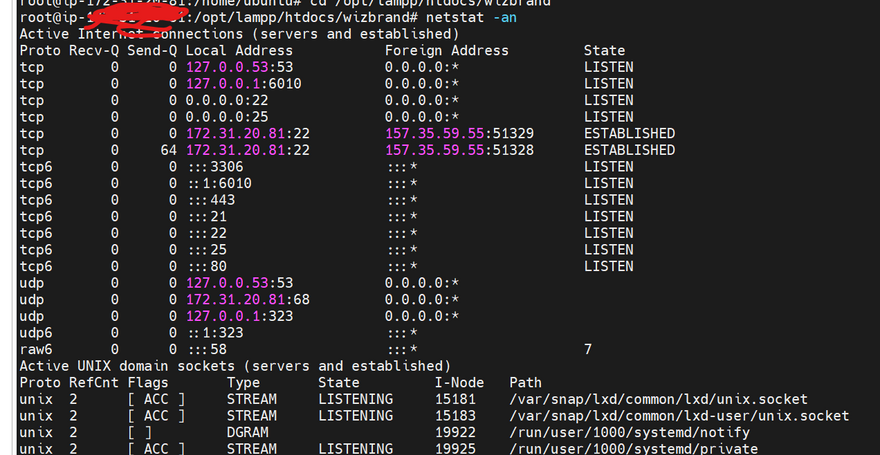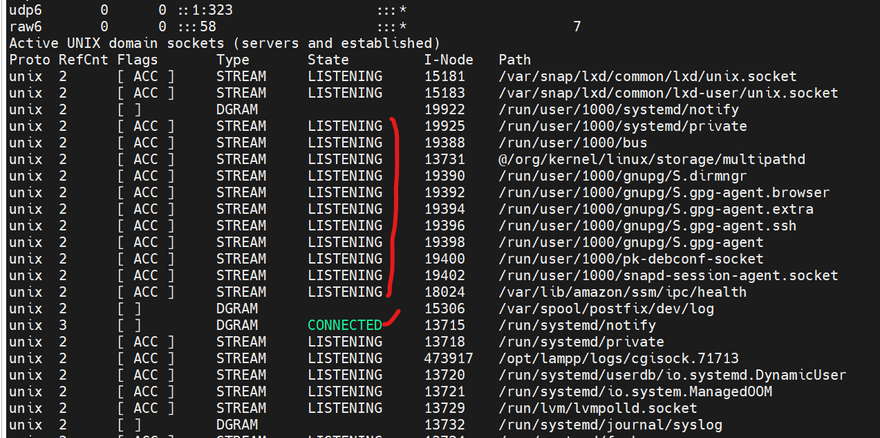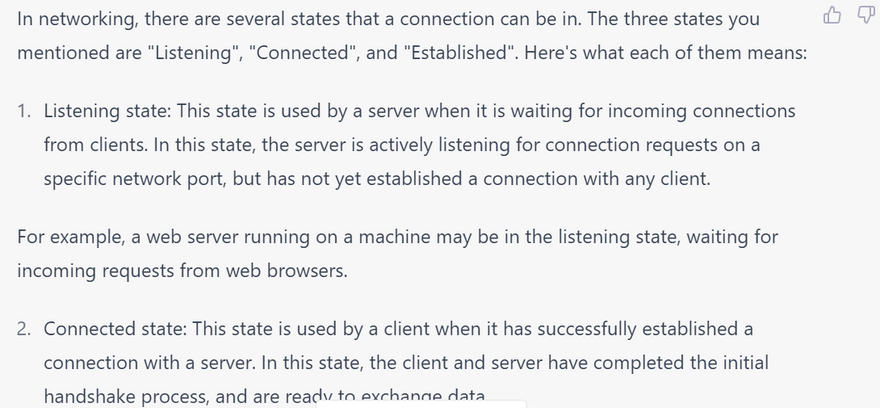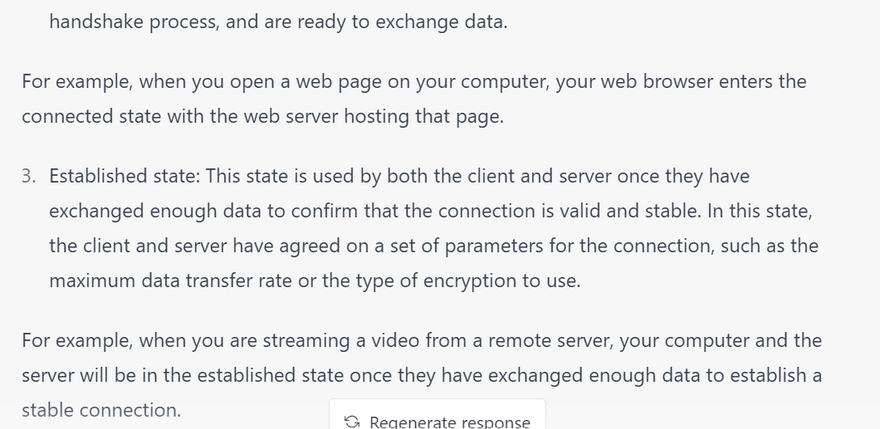difference b/w LISTENING and CONNECTED state and ESTABLISHED
In network connection statistics, LISTENING and CONNECTED are two different states that a socket can be in. Here's the difference between the two states:
During a network connection, there are different states that a connection can go through. These states are commonly referred to as the TCP connection states. The following are the most common TCP connection states and a brief description of each:
LISTEN: This state is used by a server to wait for a connection request from a client. When a server is in this state, it is ready to accept a connection request from a client. For example, when a web server is started, it enters the LISTEN state and waits for incoming requests from web clients.
SYN-SENT: This state is used by a client to initiate a connection with a server. When a client sends a SYN packet to a server, it enters the SYN-SENT state and waits for a SYN-ACK response from the server. If the server responds with a SYN-ACK packet, the connection moves to the next state.
SYN-RECEIVED: This state is used by a server to acknowledge a client's SYN packet. When a server receives a SYN packet from a client, it enters the SYN-RECEIVED state and responds with a SYN-ACK packet.
ESTABLISHED: This state is used when the connection has been successfully established between the client and the server. In this state, data can be exchanged between the client and the server. For example, when a client requests a web page from a web server, the connection moves into the ESTABLISHED state and the server sends the requested page to the client.
FIN-WAIT-1: This state is used when the client has sent a FIN packet to the server to close the connection. In this state, the client waits for an ACK packet from the server to confirm that the server has received the FIN packet.
FIN-WAIT-2: This state is used when the client has received an ACK packet from the server for its FIN packet. In this state, the client waits for a FIN packet from the server to confirm that the server has also closed the connection.
TIME-WAIT: This state is used when the client has received a FIN packet from the server and has sent an ACK packet to the server. In this state, the client waits for a certain period of time before closing the connection to ensure that all packets have been received.
CLOSED: This state is used when the connection has been closed and there is no more data being exchanged between the client and the server.
These are some of the most common TCP connection states. It is important to note that not all connection states may be used in every connection, and some connections may go through additional states depending on the specific protocol being used.
LISTENING: This state is used by a server socket to indicate that it is ready to accept incoming connections from clients. When a socket is in the LISTENING state, it is waiting for a client to initiate a connection. For example, when a web server is started, it enters the LISTENING state and waits for incoming requests from web clients.
CONNECTED: This state is used by a socket to indicate that it has an established connection with another socket. When a socket is in the CONNECTED state, it means that data can be exchanged between the two sockets. For example, when a client requests a web page from a web server, the connection moves into the CONNECTED state and the server sends the requested page to the client.
In other words, LISTENING is a state that a server socket enters to indicate that it is waiting for incoming connection requests, while CONNECTED is a state that a socket enters to indicate that it has successfully established a connection with another socket.
To illustrate the difference between the two states, consider a web server that is listening on port 80 for incoming requests from web clients. When the server is in the LISTENING state, it is waiting for a client to connect. Once a client sends a request to the server, the server socket transitions from the LISTENING state to the CONNECTED state, indicating that it has established a connection with the client socket. The two sockets can then exchange data until the connection is closed.





Top comments (0)